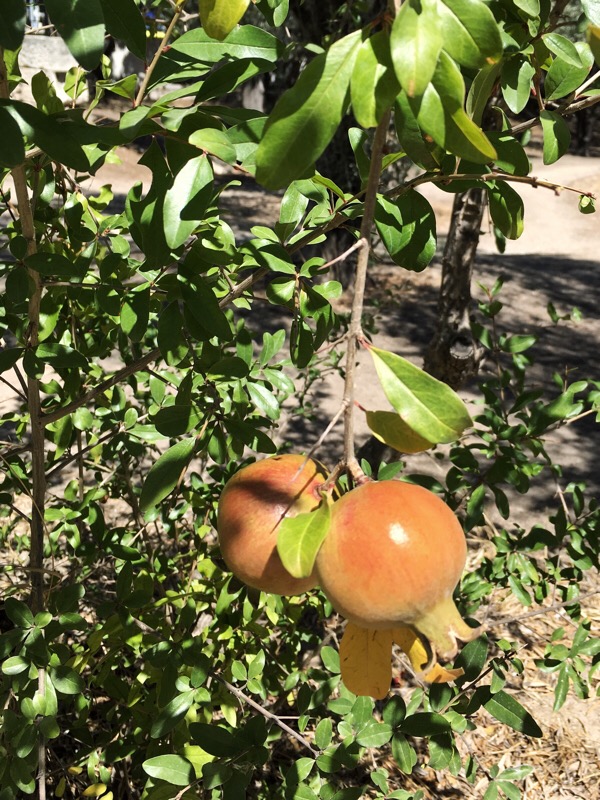Kerameikos is where to sleep with the fishes
Friends, if you don’t know this about me already, I need to share with you that I have a fascination with visiting cemeteries. They’re a bit like outdoor museums and show how the living treated their dead. Kerameikos is different from the usual cemeteries I visit since it hasn’t admitted new residents in many years. But it was no slacker: it received thousands of Athenians over the course of 1,500 years.
Keep in mind that the sculptures you see outdoors are likely reproductions of the originals, and any remaining originals are kept safely indoors from the ravages of the elements in the museum. But I liked seeing the copies where they were originally located in the context of the cemetery.
These deceased sisters’ expressions of apathy are an indication that they are no longer subject to the clutches of this world’s pain.
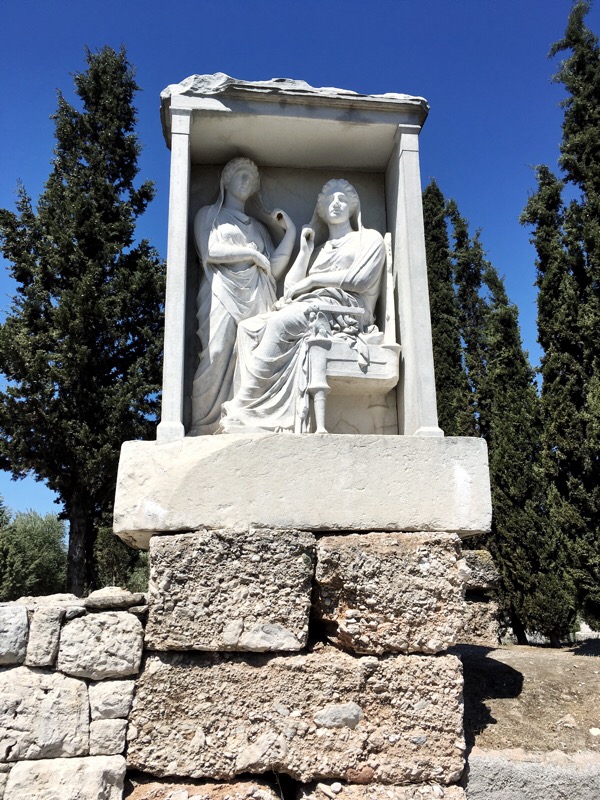
It’s interesting to see domestic animals from the past. This sculpture is of a breed called Molossus, which was a predecessor to today’s Mastiffs.
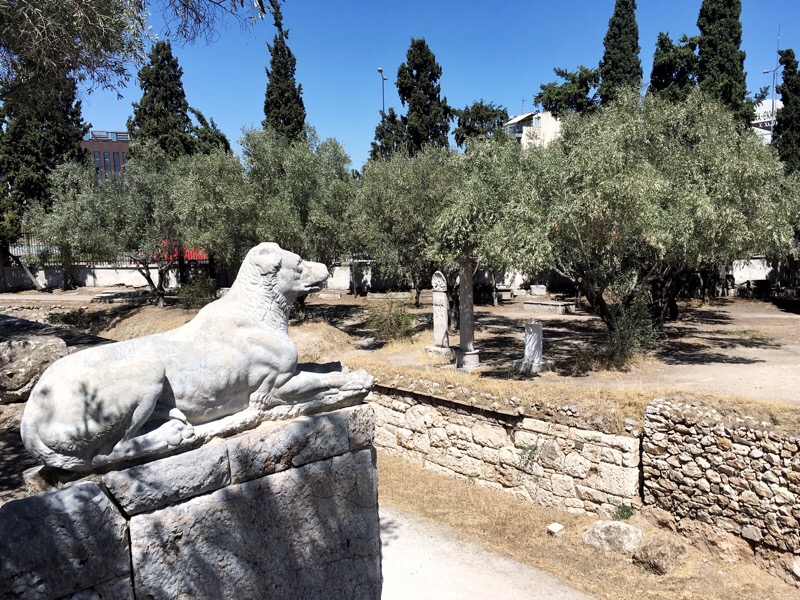
Below are examples of funerary vases and handshake memorials, so named because they depict the deceased shaking hands with their then-still-living loved ones as a farewell gesture.
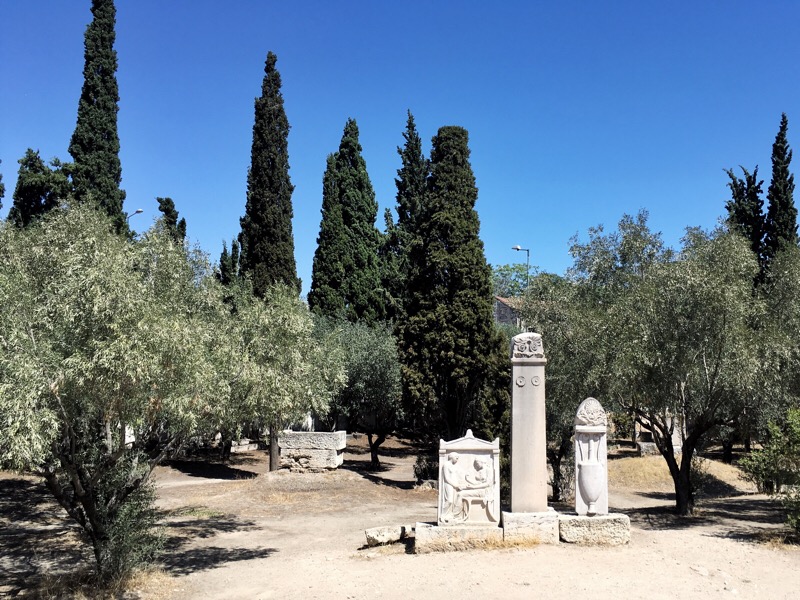
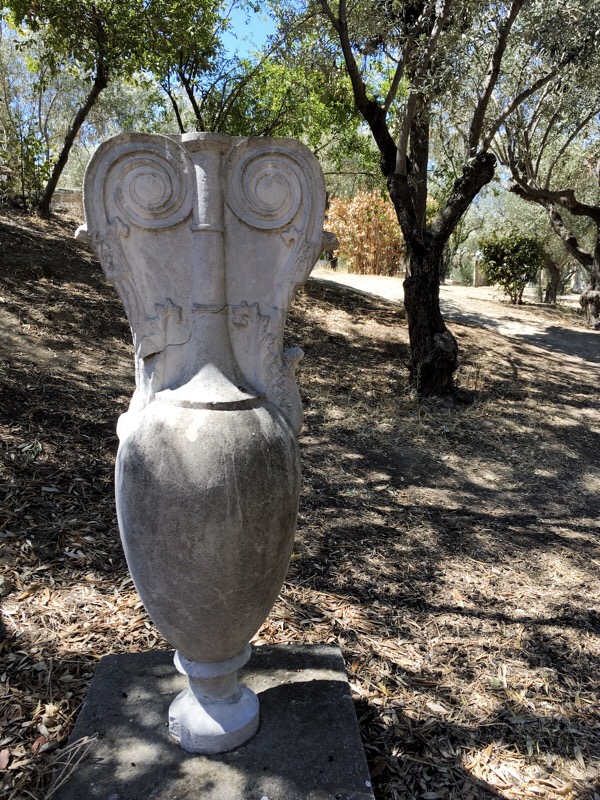
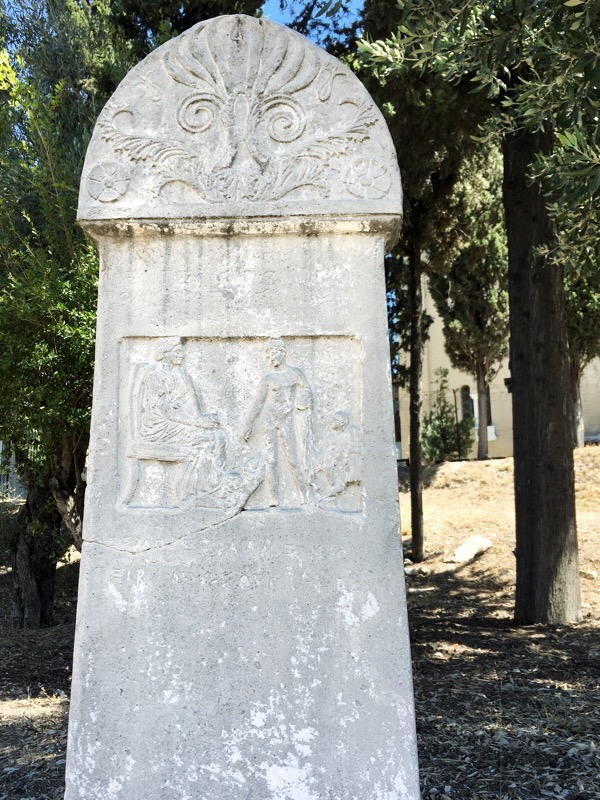
This cornerstone marks a sacred olive tree grove called Tripopatréion.
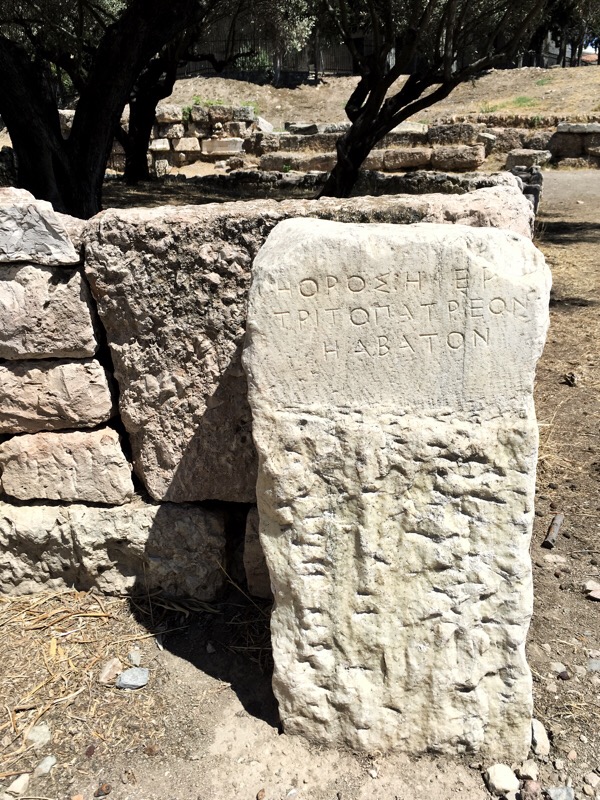
In one corner of Kerameikos where a number of excavated objects are camped out is a tomb with wavy indentations. I marveled at how talented the sculptors must have been to make marble bend to their will.
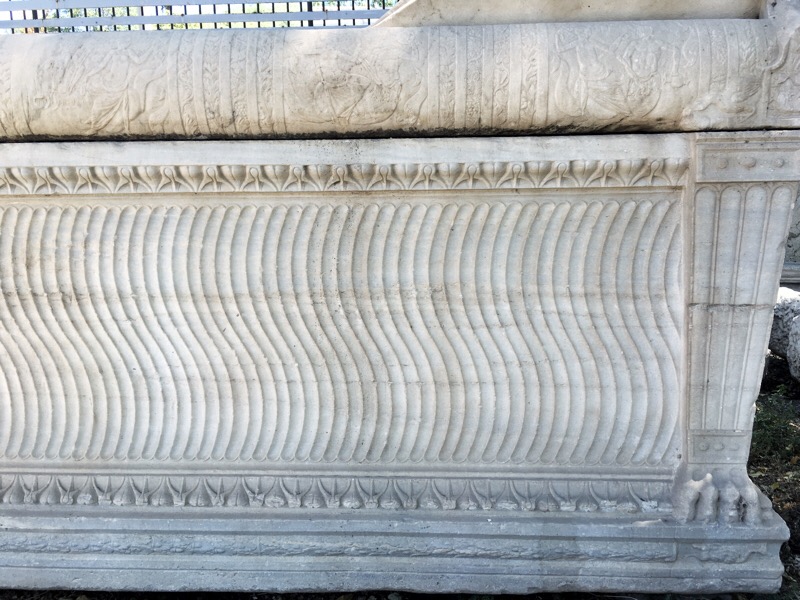
You can see part of the Athens city wall and how it’s been added onto in phases over ten centuries.
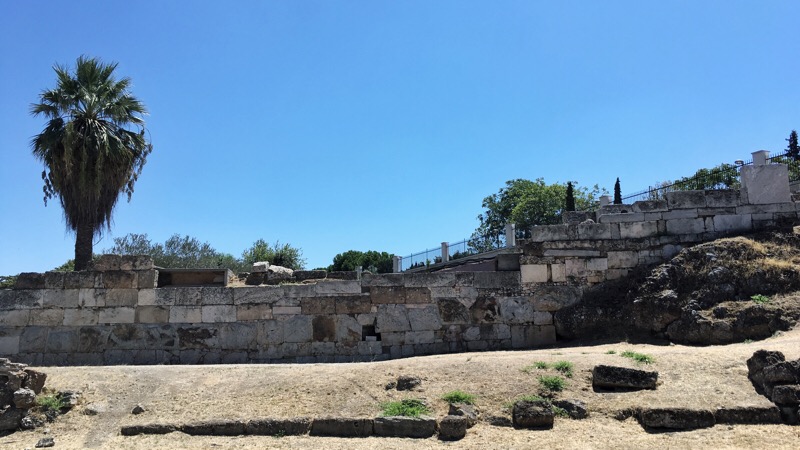
The museum is air-conditioned, which is such a welcome respite from the mid-day heat of summer. A couple of sphinxes from around 550 BC live there, as does the original 340 BC version of a bull that used to be on a pedestal in the middle of a grave enclosure.
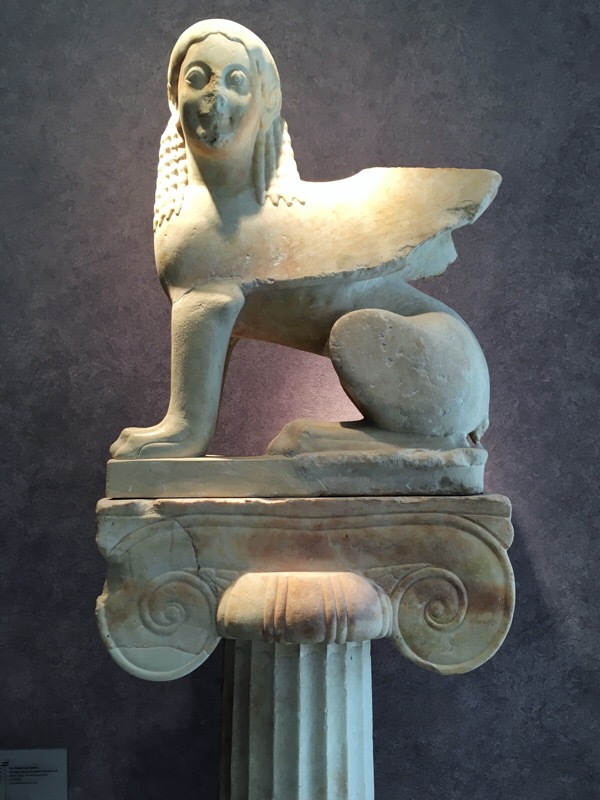
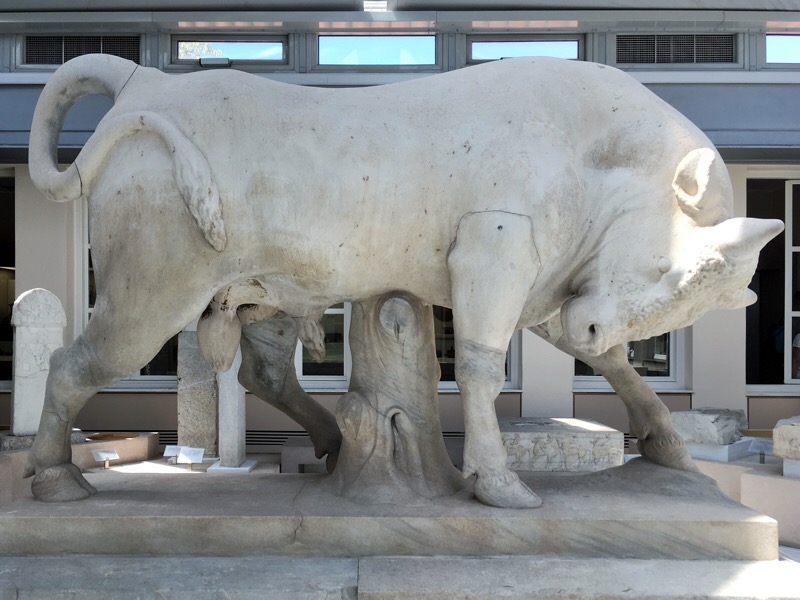
Archaeologists have preserved burial offerings from their digs here, much of it being pottery but also some precious metals.
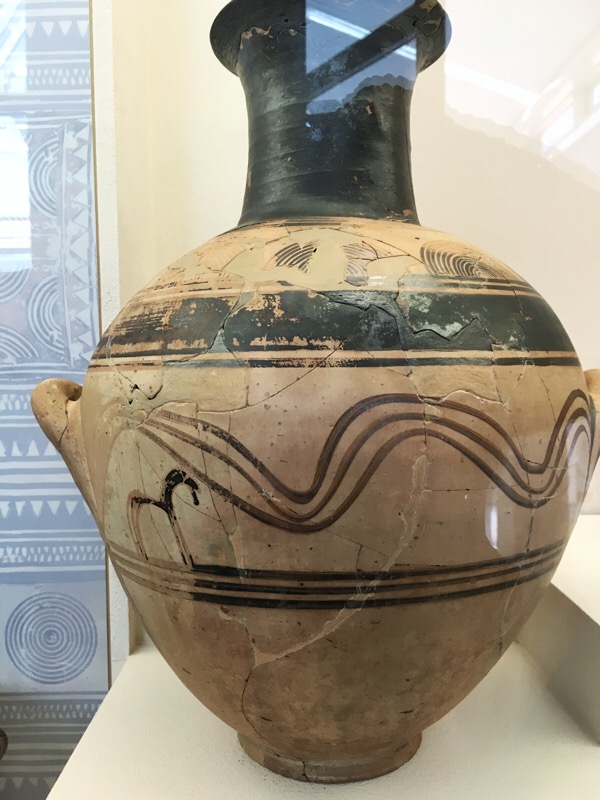
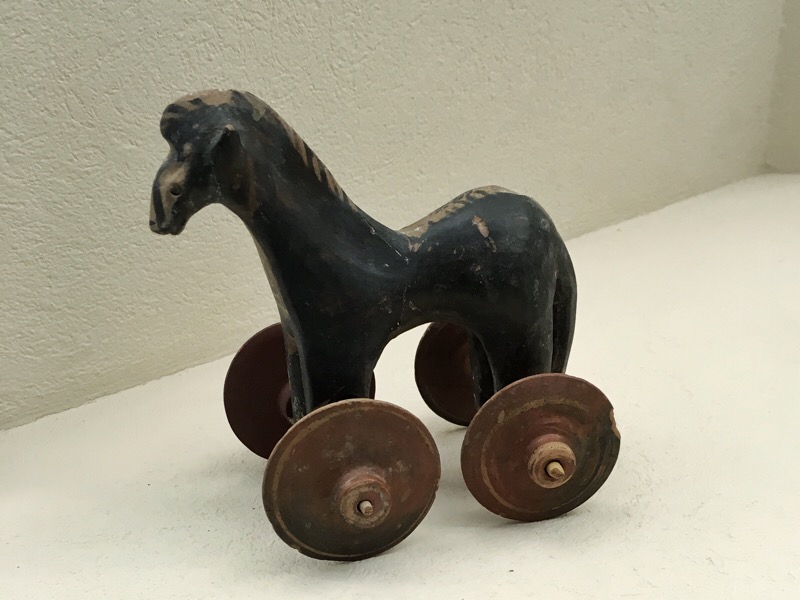
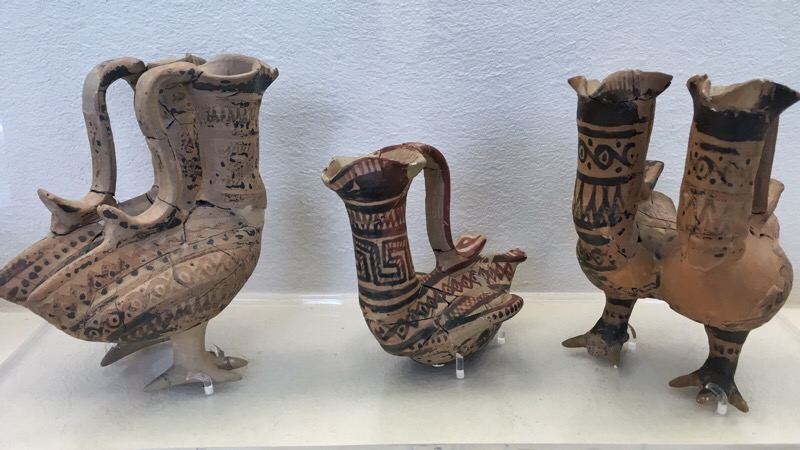
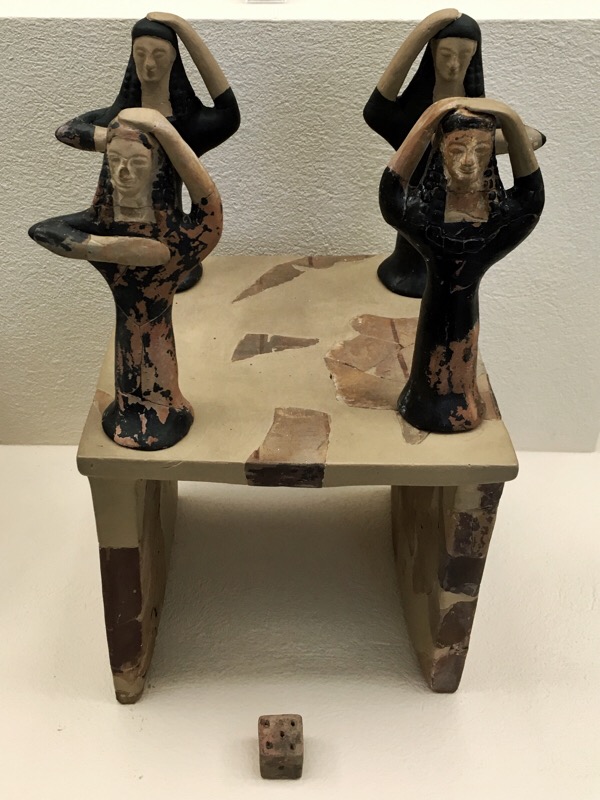
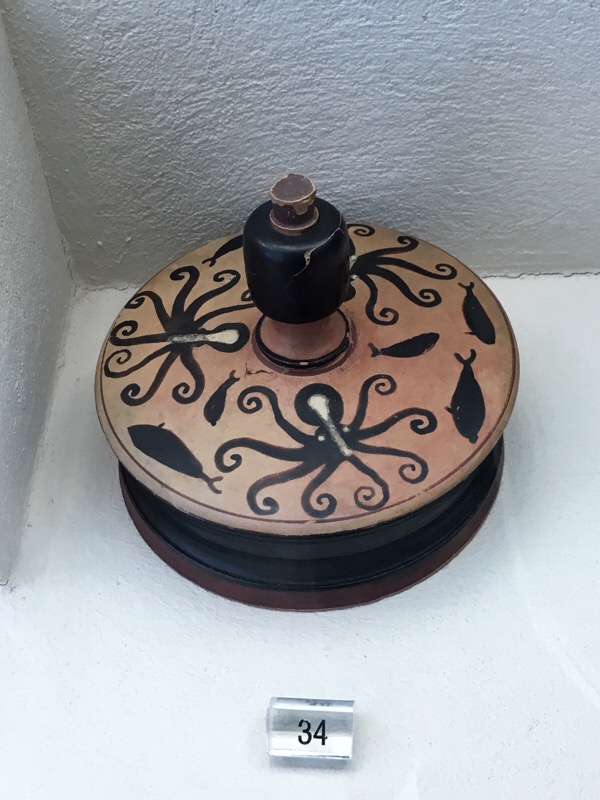
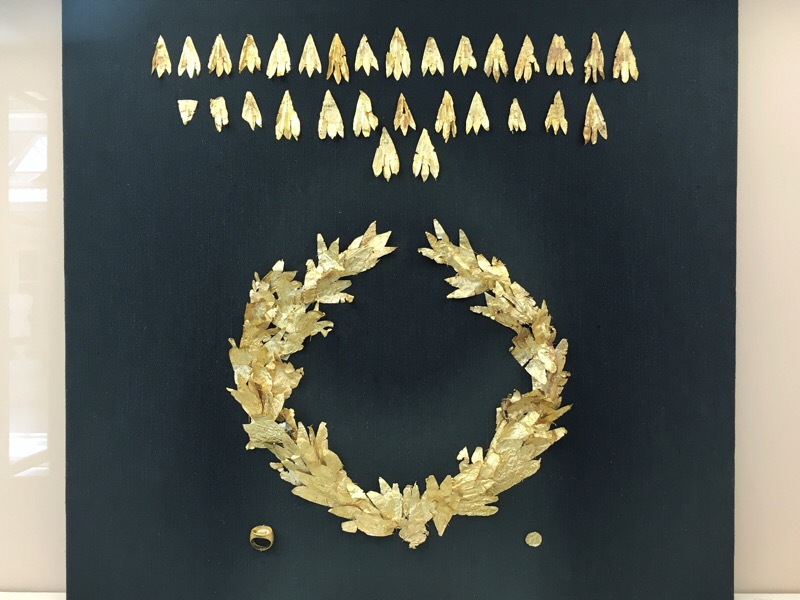
Despite all the evidence of death at Kerameikos, signs of life are around you, including the pomegranates growing in the sun. Pay this cemetery a visit if you want a less conventional look at Athens.
